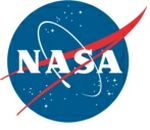KSC’s High-Tech Facilities Yield Energy Research Bonanza
By Space Coast Daily // December 28, 2012
Private & Public Firms Flock To Area
BREVARD COUNTY • KENNEDY SPACE CENTER, FLORIDA – Kennedy Space Center’s future is not limited to space thanks to a technical, engineering and scientific infrastructure that could serve a variety of industries at the same time the center goes about its traditional spaceflight work.

“There’s a lot of potential for Kennedy and the workforce to be engaged with commercial partnerships,” said Robert Hubbard, Partnership Development manager at NASA’s Florida launch center. “We have a lot of great technologies developed in-house that can be used to help advance partner technologies. This is great news to many, because this means that we now have the opportunity, more so than before to make available our lab capabilities, our expertise and licenses to utilize our technologies.”
Officials at the Space Coast Energy Consortium say Kennedy has dozens of unique features that make it ideal for research work, along with the technical workforce and cutting-edge researchers needed.
“Kennedy has thought of itself as an aerospace-focused place, but those skills have a broad applicability for other things,” said David Mandernack, project director for the energy consortium.
For example, Kennedy’s work preparing rockets and spacecraft for flight includes handling super-cold propellants, such as hydrogen and oxygen safely, along with hypergolic chemicals that are toxic and call for special accommodations.
The center also has an extensive testing apparatus and a stable of unique lifting equipment. There are a number of laboratories on the center, too, including a host of engineers who are experts at running tests on machines and components without destroying them.
Areas commonly considered for technological research at Kennedy tend to focus on energy-related ideas, such as bio-fuels, advanced batteries, hydrogen storage, solar arrays and panels, super-conducting magnets and turbines for generating power from the wind or other natural sources.
“The energy industry has a real need for integrated engineering expertise, which Kennedy has a lot of,” said Mike Aller, president of the Space Coast Energy Consortium.
 For example, Cella Energy already signed an agreement to continue development of its hydrogen storage material and systems at Kennedy. Cella is currently working out of Exploration Park, a commercial development area on Kennedy underdevelopment to house a diverse collection of private companies.
For example, Cella Energy already signed an agreement to continue development of its hydrogen storage material and systems at Kennedy. Cella is currently working out of Exploration Park, a commercial development area on Kennedy underdevelopment to house a diverse collection of private companies.
Kennedy also is home to two solar farms built by Florida Power & Light that have established a path for future partnerships to follow.
Also, an engineer who worked for United Space Alliance at Kennedy developed a portable solar panel that unfolds on a trailer to create electricity in remote areas or after storms that knock out power. Jim Fletcher, the engineer, is perfecting the design now with an eye on putting it into production.
Hubbard said he hears roughly three proposals a month for clean energy partnerships, though some are farther along than others. He said Kennedy is best equipped to help a company move its technology from early concept levels to a point where it can be demonstrated effectively.
“I think it is great that people outside of the gates are seeing we have capabilities well outside of just processing spacecrafts and payloads,” Hubbard said.
Hubbard said researchers at Kennedy are eager to share their expertise with companies and help them through evaluation and testing, assistance with developing new devices, and design and handling techniques.
When asked about how the Kennedy research community’s feelings on enabling commercial partnerships, “I think the words they’d probably use are ‘we are excited about this direction'” Hubbard said. “It gives them a chance to see the technologies they’re developing with space application in mind, used outside NASA.”
Mandernack pointed to the machinery at the Launch Equipment Test Facility, or LETF, that is capable of putting huge devices under the weight of hundreds of tons to see how they would hold up. NASA uses the LETF to analyze support equipment for rockets, but a company could rent the area to test equipment destined for use in the ocean.
Aller said the energy consortium already has heard from large and small businesses, along with companies that fall in between.
“We’re not looking for the grand slam homerun because a company that just wants to come in and do one non-destructive test could say, well, this worked out so well that they bring something else in,” said Tim Franta, project manager for the Space Coast Energy Consortium.
“Within my Office, the Center Planning and Development Directorate, we are pushing the envelope and doing things that have never been done at Kennedy before,” Hubbard said. “Industry is starting to see we can operate outside of the mode we’ve operated under for many years and foster an environment that is commercial friendly.”












